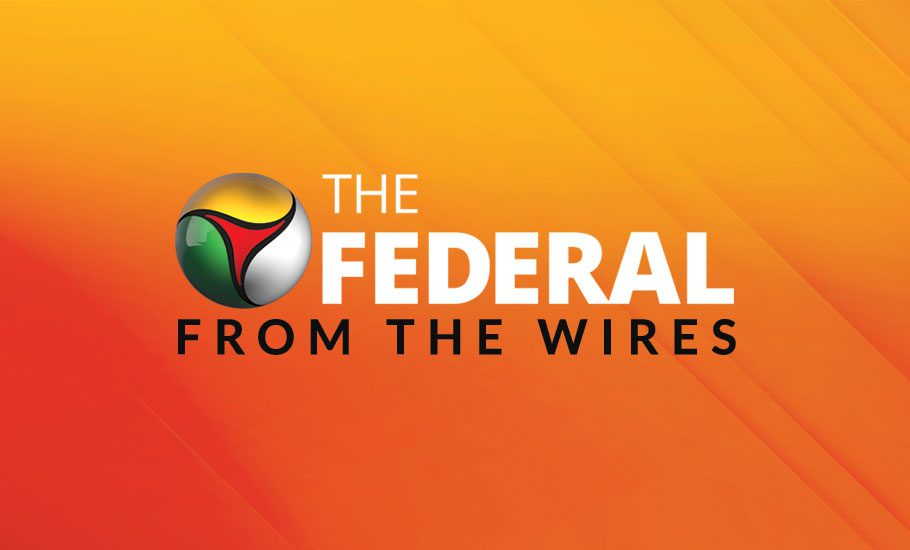
Govt on track to meet fiscal deficit target of 6.4% for current fiscal: World Bank report

The central government is on track to meet its fiscal deficit target of 6.4 per cent of the GDP for 2022-23 on the back of strong growth in revenue collections, the World Bank said in its India Development Update on Tuesday.
High nominal GDP growth in the first quarter supported strong growth in revenue collection, especially Goods and Services Tax (GST), despite tax cuts on fuel.
Notwithstanding an increase in spending due to expanded fertilizer subsidies and food subsidies for vulnerable households in response to the commodity price shock, the government is on track to meet its FY22/23 fiscal deficit target of 6.4 per cent of GDP and the general government deficit is projected to decline to 9.6 per cent from 10.3 per cent in FY21/22 and 13.3 per cent in FY20/21.
Public debt is also projected to decline to 84.3 per cent of GDP in FY23, from a peak of 87.6 per cent in FY21, it said.
The central governments revenues increased by 9.5 per cent and spending by 12.2 per cent.
As a result, it said, the fiscal deficit touched 37.3 per cent of the annual target in H1 FY22/23, above the 35 per cent of the same half last year.
“This masked strong growth in gross tax revenues, which increased by 17.6 per cent y-o-y and resulted in larger transfers to the state governments. Budget execution has also improved with capital spending increasing by 35 per cent,” it said.
With regard to the current account deficit, the report said, it turned into a deficit of 1.1 per cent of GDP in 2021-22 from a surplus in the previous year, and the deficit widened further in FY23 due to surging imports.
Thus far, it said, Indias current account balance remains adequately financed by robust net capital inflows. Foreign Direct Investment (FDI) inflowsthe main source of financing for the current account deficitwere stable at around 1.6 per cent of GDP in Q1 FY22/23, up from an average of 1.2 per cent in the previous fiscal year.
This has partially offset the initial net outflows of foreign portfolio investment, which was 1.7 per cent of GDP, it said.
“The slowdown in advanced economies (AEs) could also position India as a more attractive alternative investment destination. The government is also expected to introduce new production-linked investment incentives and fiscal measures to encourage foreign investment in various sectors of the economy,” it said.
With the RBI raising policy rates, it said, the widening interest-rate differential with the US Federal Reserve could also help prevent capital outflows.
On the external front, it said, the income elasticity of Indias exports is high and thus exports are susceptible to the global growth slowdown.
India is also a net importer of crude oil and elevated global commodity prices will continue to weigh on domestic inflation, constraining domestic activity, it said.
However, the recent decline in commodity prices may dampen inflationary pressures.
Observing that the economy is relatively more insulated from global spillovers than other emerging markets, the report said, India is less exposed to international trade flows and relies on its large domestic market.
“Indias external position has also improved considerably over the last decade. The current account is adequately financed by stable foreign direct investment inflows and a solid cushion of foreign exchange reserves. At over USD 500 billion, India has one of the largest holdings of international reserves in the world,” it said.
While the reserves have declined by about 13 per cent this year, it said, they still provide close to eight months of import cover, based on total imports over the last four quarters (from Q3 FY21/22 to Q2 FY22/23).
As a result, it said, pressure on the Indian rupee has been muted compared to other emerging market economies (EMEs).
Indias financial sector has also deepened considerably over the years but is still recovering from a long period of stress and thus lags relative to other EMEs in terms of capital adequacy and non-performing loan (NPL) ratios, it said.
Corporate and household debt has declined and remains benign but public debt has increased sharply, as a share of GDP driven by the pandemic, it said.
However, it said, increased market borrowing has improved the transparency and credibility of fiscal policy.
The government has also diversified the investor base for government securities. In addition, it said, inflation targeting by the RBI has helped to anchor inflation expectations and price stability has improved.
(Except for the headline, this story has not been edited by The Federal staff and is auto-published from a syndicated feed.)


